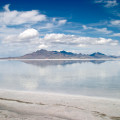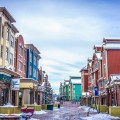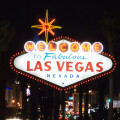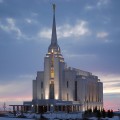Logan, Utah; Big History in Cache Valley
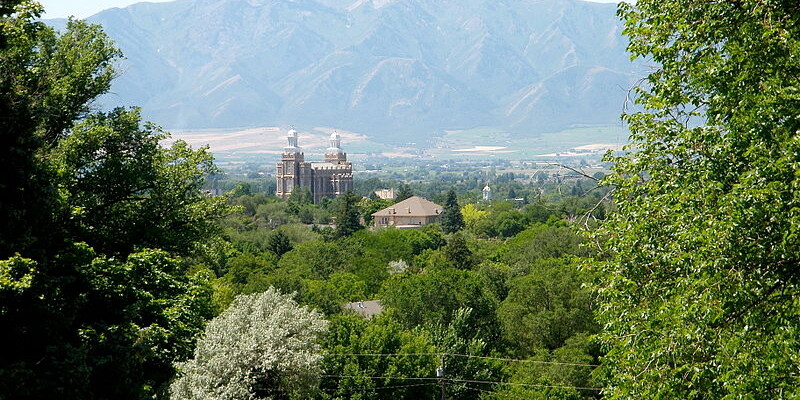
Things to do in Logan, Utah
Logan is a small town located in Cache County in Northern Utah. Logan is the county seat of Cache County and the principal city in the Logan metropolitan area. Logan is home to many historic buildings, such as the Logan Tabernacle and the Logan Utah Temple, both owned and operated by The Church of Jesus Christ of Latter-day Saints. With plenty of indoor and outdoor activities to enjoy throughout the year, Logan is a wondrous town to explore during any season.
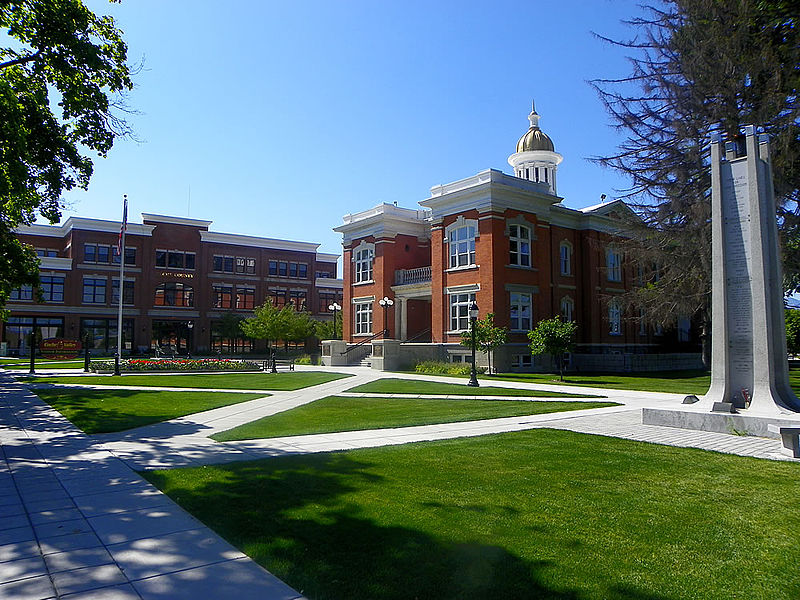
Downtown Logan Photo Courtesy UtahStizzle/Wikimedia Commons
The first people to inhabit the valleys of present-day Cache County were indigenous peoples, who lived in the area as early as 10,000 BCE. Later on, the valley became home to the Plains Indians and the Shoshone. European explorer Michael Bourdon discovered Cache Valley around 1818, while he was on a Mackenzie fur expedition. The valley received the name Cache Valley after fur trappers began hiding their trading goods in caches (storage locations) around that region, as a way to protect their belongings from any damage and to keep them from being stolen.
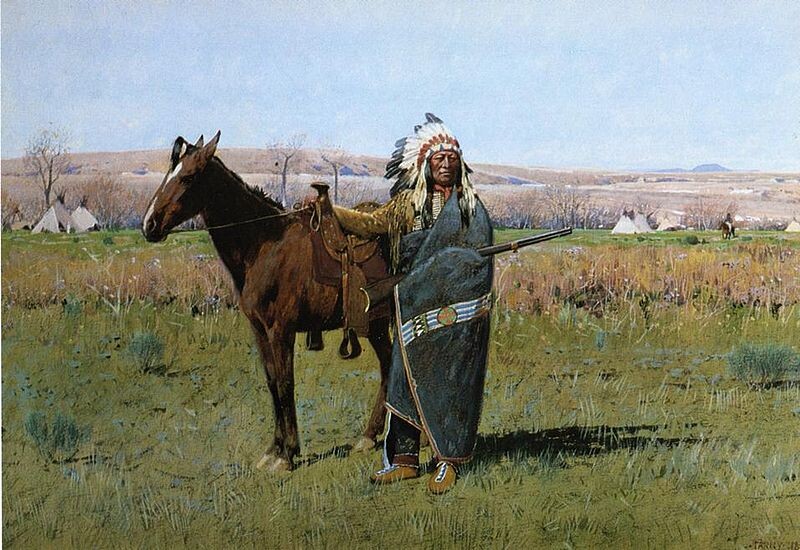
Chief Spotted Tail of the Lakota Sioux/Plains Indians painted by Henry Farny Photo Courtesy Wikipedia
Trappers and explorers visited Cache Valley in the late 18th and early 19th centuries. John Henry Weber and Jim Bridger traveled through Cache Valley in 1824; Peter Skene Ogden and James Beckwourth would travel through Cache Valley in 1825. In 1852, William Gardner (a Mormon), was the first Anglo-American to move to Cache Valley permanently. In July 1855, a group of Mormon settlers camped at Haw Bush Spring (present-day Elkhorn Ranch, just south of Wellsville, Utah), while they were moving a herd of cattle to the valley. When the extreme cold weather started to hit Haw Bush Spring, the Mormon settlers returned to the Salt Lake Valley.
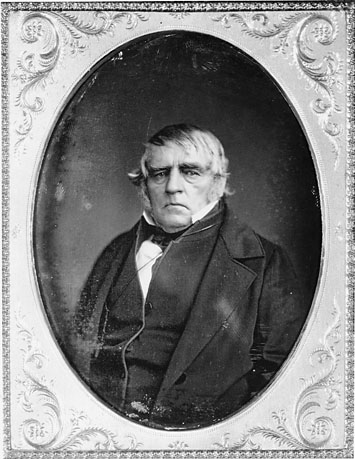
Peter Skene Ogden, late in life. Taken sometime before his death in 1854 Photo Courtesy Wikipedia
During the summer of 1856, local LDS Church leaders sent Peter Maughan to create a permanent community in Cache Valley. He created the settlement Maughan’s Fort, which was eventually reamed Wellsville, Utah, after Lieutenant Daniel H. Wells. More settlers moved to Cache Valley, and by 1859 five different settlements had been established including, Providence, Mendon, Richmond, Smithfield, and Logan. On January 29, 1863, the United States Army made an attack on a Shoshone village in Northern Cache Valley, near Preston, Idaho, where Bear River and Beaver Creek (now Battle Creek) met. The event became known as the Bear River Massacre. It is estimated that 400-500 Shoshones died (including hundreds of women and children) during the massacre. The Bear River Massacre is still known as the largest massacre of Native Americans by the United States government today.
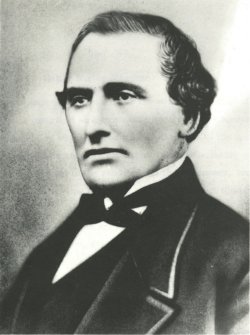
Peter Maughan Photo Courtesy Wikipedia
Logan, Utah was founded in 1859 by settlers that were sent by Brigham Young “to survey for the site of a fort near the banks of the Logan River.” The new community was given the name Logan, named after Ephraim Logan, who was a fur trapper in the area. On January 17, 1866 Logan was incorporated as a town. Brigham Young College was founded in Logan on August 6, 1877, but would close in 1926. Utah State University (formerly known as “Utah State Agricultural College”) was founded in Logan in 1888. The town of Logan saw major growth due to settlement and post-war booms. In the mid-1960s, the population of Logan grew to around 20,000. The population in Logan would exceed 50,000 in 2015. As of 2018, the estimated population of Logan is 51,542, which is expected to double by 2050. Logan is a fun town to visit in Northern Utah, with lots of great history to take in.
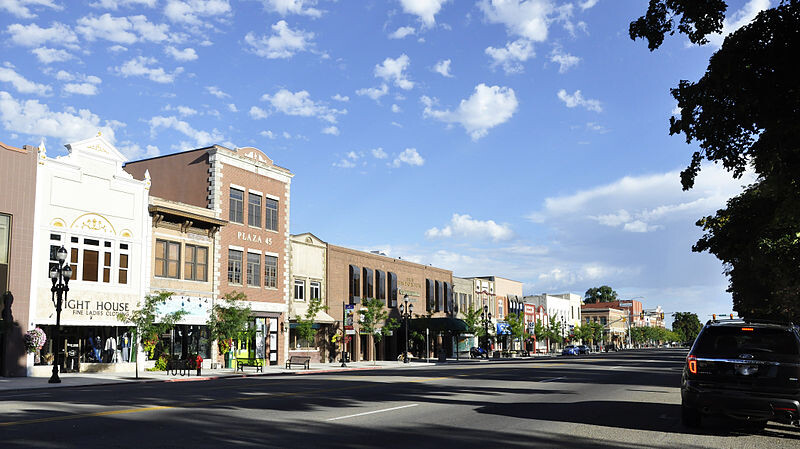
Logan, Utah Photo Credit: Paul Hermans/Photo Courtesy Wikimedia Commons
Wind Cave Hiking Trail
The Wind Cave Hiking Trail is one of the most popular trails to hike in Logan Canyon. The Wind Cave Hiking Trail is located 5.3-miles up Logan Canyon, across from Guinavah Campground. The hiking trail is 3.5-miles round trip and is classified as a moderate hike, although the trail is more gradual than walking straight up. The Wind Cave Hiking Trail offers astonishing views of the surrounding canyon, including the 200-foot cliffs across from the canyon, which are known as China Wall. The Wind Cave Hiking Trail ends on top of the roof of the cave. The inside of the cave includes spectacular views of the canyon below. The Wind Cave Hiking Trail is a great way to get some fresh air and exercise, while enjoying the beautiful scenery that Logan has to offer. The Wind Cave Hiking Trail is Trip Advisor’s #1 recommended attraction to visit in Logan.
Logan Canyon Scenic Drive
Logan Canyon Scenic Drive is a beautiful route you can take if you are passing through Logan on US-89, traveling to or from Bear Lake or Beaver Mountain Ski Resort. The drive is especially gorgeous during September and October when the fall foliage is in full swing. While driving the Logan Canyon Scenic Drive in the fall, you will be able to see the vibrant yellow, scarlet, and brown hues that are surrounded by evergreens on the mountainsides and the blue waters of the nearby lakes and reservoirs. You don’t want to miss driving along US-89, as “the views are spectacular.” Logan Canyon Scenic Drive is Trip Advisor’s #2 recommended attraction to visit in Logan.
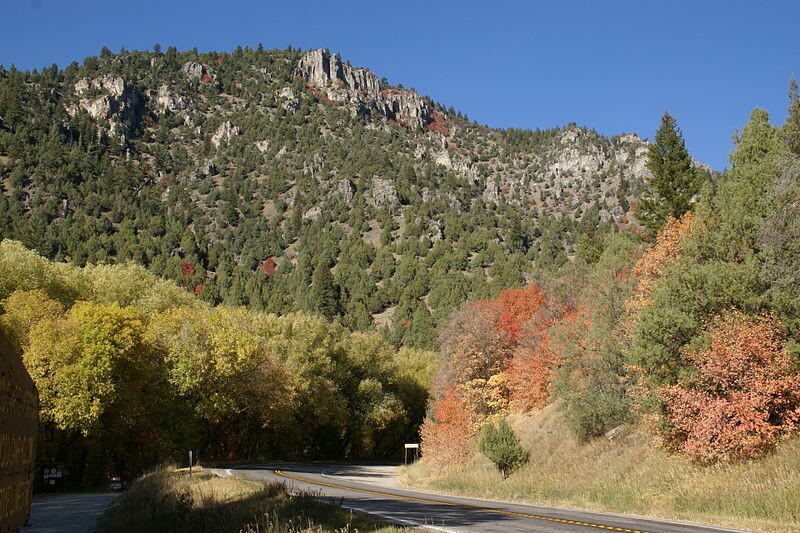
Chokecherry Home Summer Area on U.S. Route 89 through Logan Canyon Photo Courtesy Hermann Luyken/Wikimedia Commons
Utah State University
Utah State University is Utah’s land grant university that operates throughout the state of Utah. In 1904, professors who taught at Utah State had to travel by train from Logan to Burley, Idaho, so they could give their daily lectures to students. In the 1950s, it was common for professors to drive around Utah to different cities in order to teach courses and advise students.
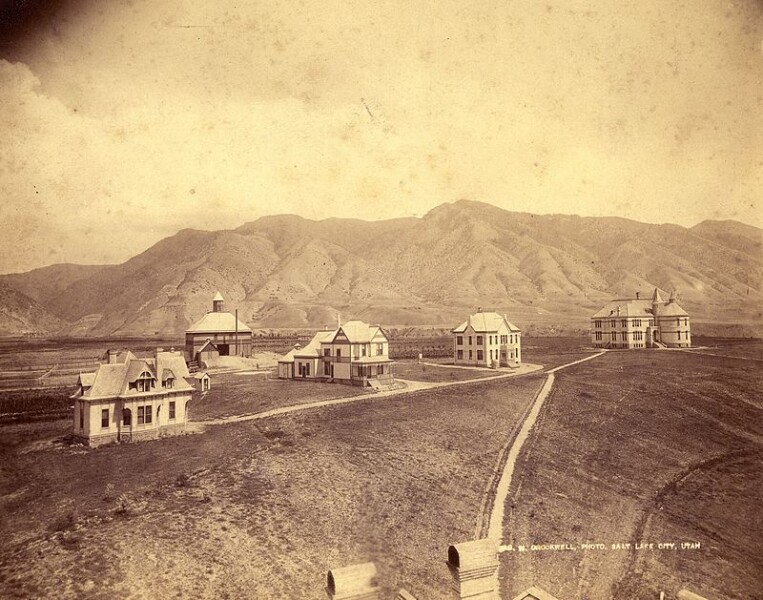 Utah State University/Old Main in 1892 Photo Courtesy W. Crockwell/Wikimedia Commons
Utah State University/Old Main in 1892 Photo Courtesy W. Crockwell/Wikimedia Commons
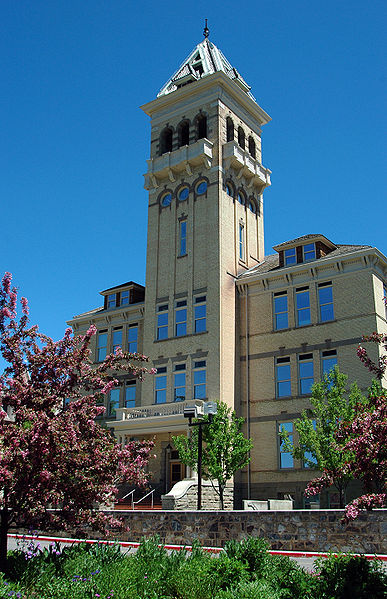
Old Main at Utah State University Photo Courtesy Cory Maylett/Wikimedia Commons
While Utah State University operates throughout the state of Utah, the main campus can be found in Logan. Utah State University’s main campus sits on a “shelf-like foothill overlooking the valley to the west.” 2 of the most well known buildings at USU include Old Main (the first building to be built for USU) and Merrill-Cazier Library (the main campus library is proud to include an extensive special collections and archives area.) Utah State University has operated its own creamery since it was founded in 1888. In the early days, it wasn’t uncommon for students to study dairying and learn how to make ice cream and different types of cheese. Today, the Aggie Ice Cream is created inside the Nutrition and Food Sciences building and you can purchase it at the Aggie Creamery on campus. Utah State University is a great place to explore in Logan. Utah State University is Trip Advisor’s #3 recommended attraction to visit in Logan.
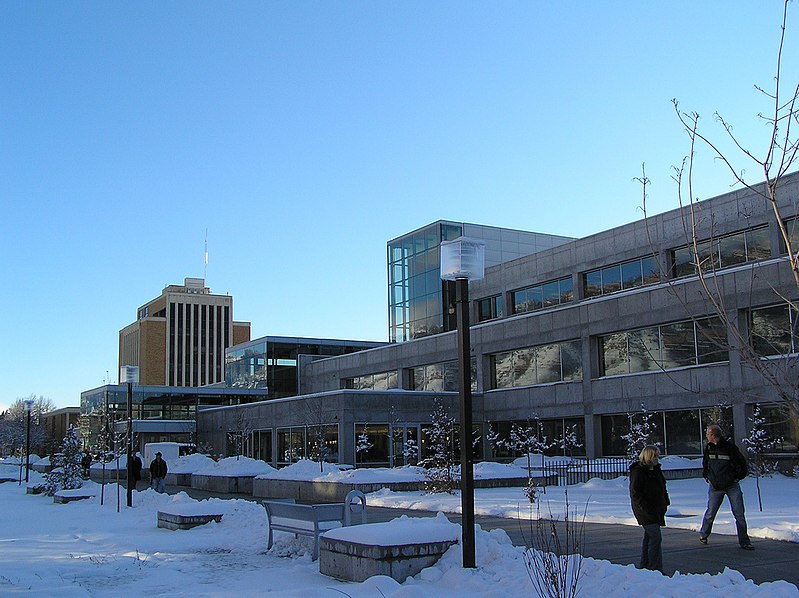
Merrill-Cazier Library Photo Courtesy Andhat/Wikimedia Commons
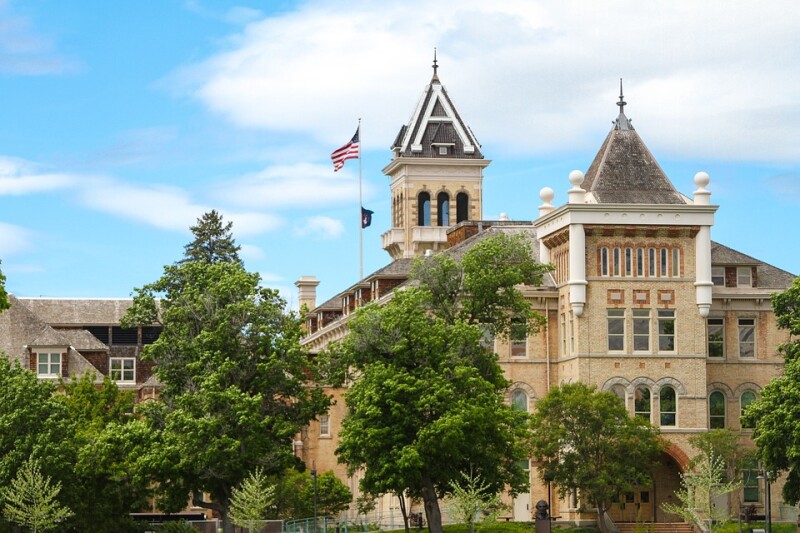
Utah State University/Old Main Photo Courtesy Pixabay
Beaver Mountain
Beaver Mountain is a ski area located 27-miles northeast of Logan, near the summit of Logan Canyon in the Bear River Mountains, west of Bear Lake and near the Utah/Idaho state border. Beaver Mountain is a popular are for residents of Logan, students who attend Utah State University, and residents of Cache Valley and Bear Lake to ski at, even though it is smaller than most ski resort areas in Utah.
Since the slopes at Beaver Mountain are facing east, the resort receives less snowfall than the surrounding resorts, where the slopes of the mountain face west. Beaver Mountain doesn’t use snowmaking equipment and depends on natural snowfall, but that usually isn’t a problem as it snows quite a bit in the area. Due to the high amount of snowfall Beaver Mountain gets, the resort is usually open several weeks later than the surrounding ski resorts in Utah. Beaver Mountain includes a full-service ski rental operation and ski shop, as well as a day lodge with a restaurant inside. Beaver Mountain is popular for alpine skiing and snowboarding, but there is also a section for cross-country skiing, near the base of the mountain. Beaver Mountain is a great place to hit the slopes and is Trip Advisor’s #4 recommended attraction to visit in Logan.
Logan Tabernacle
Construction plans for the Logan Tabernacle started in 1864. The process to build the Logan Tabernacle took 27 years to complete. While the Tabernacle was under construction, work was delayed on two separate occasions. The LDS Tabernacle resumed construction in 1873 and the size of the Tabernacle was increased. The second time construction was delayed on the Tabernacle was in 1877. After the exterior walls were completed, the construction crew took a break from working on the Tabernacle, so they could finish construction on the LDS Logan Temple. LDS Church President Wilford Woodruff dedicated the Logan Tabernacle, once the building was completed in 1891.
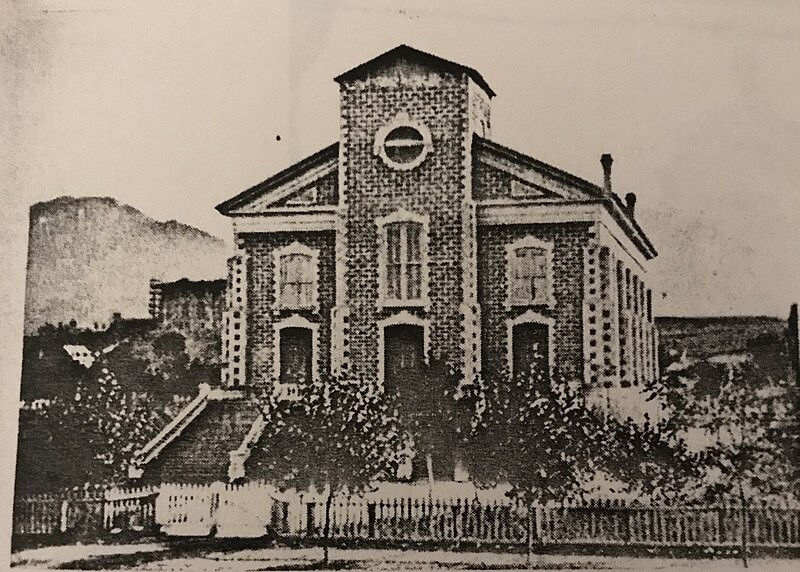
Logan Tabernacle in 1880 Photo Courtesy Violapomposa8/Wikimedia Commons
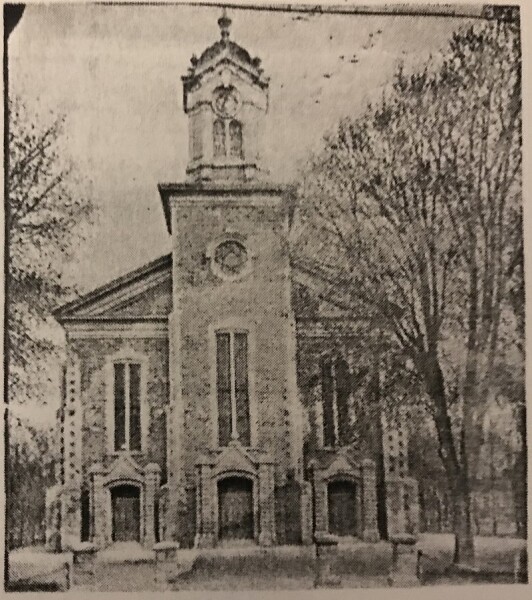
Logan Tabernacle in 1916 Photo Courtesy Violapomposa8/Wikimedia Commons
The Logan Tabernacle’s architectural style was designed with elements of Greek, Roman, Gothic, and Byzantine styles. Today, the Logan Tabernacle is used regularly for church meetings, seminary graduations, musical concerts, and different lectures. The Logan Tabernacle is also the location where many local celebrations take place, including Logan’s annual Summerfest Arts Faire, which is held every June. The Logan Tabernacle is home to the historic Great Pipe Organ, that you can see inside the building. Visitors are more than welcome to tour the Logan Tabernacle during the summers (between June and September.) The LDS Tabernacle is Trip Advisor’s #5 recommended attraction to visit in Logan.
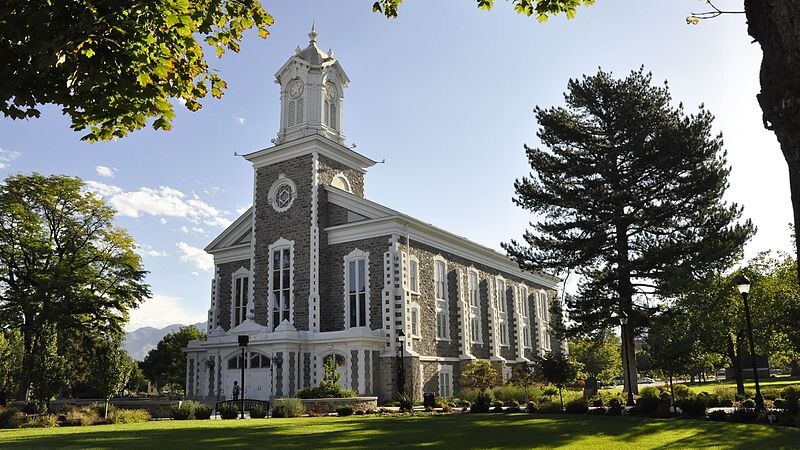
Photo Courtesy Paul Hermans/Wikimedia Commons
Logan Utah Temple
The Church of Jesus Christ of Latter-day Saints announced plans to build the Logan Utah Temple on October 6, 1876. Construction on the Logan Utah Temple began on May 18, 1877 and concluded in 1884. The Logan Utah Temple was the fourth temple to be built by the LDS Church, the second temple to be built in Utah, and today is the seventh largest LDS temple in the world. Before the Logan Utah Temple was built, the site it was built upon was used as a park and public grounds. Over 25,000 people worked on the Logan Utah Temple, including people who were hired by the LDS Church and members of the LDS Church who volunteered their time. Women in the area were asked to create carpet for the Logan Utah Temple, as commercially made carpet was not available for purchase in Utah at that time. It took the team of women two months to create 2,144 square yards of carpet.
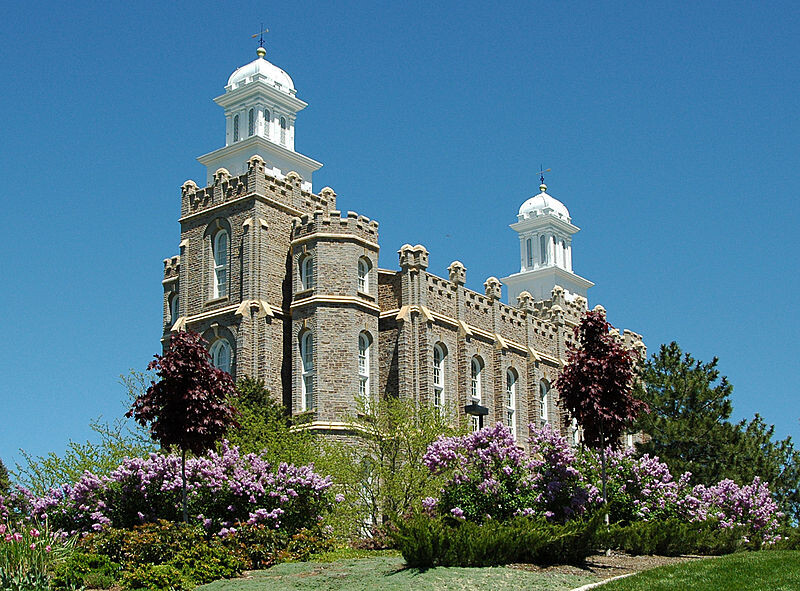
Logan Utah Temple Photo Courtesy Cory Maylett/Wikimedia Commons
A fire destroyed most of the southeast stairway of the Logan Temple in 1917. It took three months to rebuild the stairway and cost $40,000. The Logan Utah Temple received a remodel in 1949. In 1977, the temple was completely gutted and was remodeled a second time. Former LDS Church President Spencer W. Kimball rededicated The Logan Utah Temple on March 13, 1979, after the second remodel was completed. The Logan Utah Temple was listed on the National Register of Historic Places on November 20, 1975. The Logan Utah Temple is Trip Advisor’s #6 recommended attraction to visit in Logan.
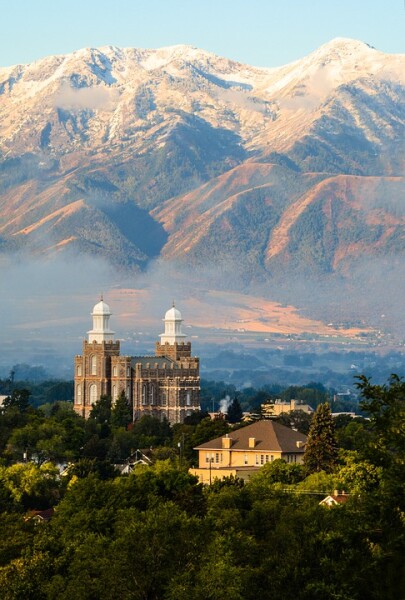
Photo Courtesy Pixabay
Tan Doori Oven
Tandoori Oven has been a popular restaurant in Logan for over 10 years and has been rated “the top authentic food destination in Northern Utah.” Tandoori Oven is proud to serve “long lasting, rich flavors of curries, masalas, traditionally slow cooked meats and vegetables cooked to perfection in tandoor (Clay oven.”) Tandoori Oven serves up some delicious and authentic Indian cuisine including Vegetable Samosa, Chicken Tikka Marsala, Vegetable Marsala, Shrimp Tikka Marsala, Shrimp Kurma, and Chicken Kurma. For dessert Tandoori Oven serves Homemade Indian [Mango] Ice Cream, made with fresh mangoes. Tandoori Oven is proud to host events at the restaurant and caters to off-site events. Tandoori Oven is Trip Advisor’s #1 recommended restaurant to dine at in Logan.
Angie’s Restaurant
Angie’s Restaurant opened in 1983, and is still proudly serving “delicious home-cooked American favorites” to Cache Valley locals and visitors. The staff at Angie’s Restaurant pride themselves on providing guests with “fast, friendly, service, and a good meal for an affordable price.” Angie’s Restaurant has a full menu featuring different varieties of Scrambles, 10 oz. New York Steak & Eggs, Egg Burrito, Biscuits & Gravy, Steel Cut Oatmeal, and a selection of Omelets, Skillets, and Scones. Angie’s Restaurant also offers a selection of Pancakes, French Toast, and Belgian Waffles. The breakfast menu at Angie’s Restaurant also includes a Build Your Own Breakfast section, where you can chose four items from a list of eggs, meats, pastries, pancakes, and breakfast sides. Angie’s lunch and dinner menu includes Red Snapper, Pot Roast, Crack Black Pepper Chicken, Tangy Hickory Burger, Feisty Feta Chicken Sandwich, Hot Roast Beef Sandwich, and Homemade Soup and Chili.
After your meal, don’t forget to look over the dessert menu at Angie’s and take in the extravagant treats you can order. The dessert menu at Angie’s features Angie’s Giant Shakes (served in a 30 oz. stainless steel shake cup) in flavors including Vanilla, Chocolate, Caramel, Strawberry, Blueberry, Oreo, Peanut Butter Cup, and Hawaiian Salted Caramel. The dessert menu also features Delicious Homemade Pies, Homemade Cheesecake, Ice Cream Sundaes, Hot Fudge Brownie Delight, and an Old Fashioned Banana Split. For true ice cream lovers, you can order The Kitchen Sink, which includes two whole bananas, mounds of vanilla ice cream, three toppings of your choice, covered in whipped cream, and topped with chopped nuts and a cherry. Those who can “clean the sink” get a free bumper sticker. Angie’s Restaurant is a great place to enjoy a tasty, home-cooked meal with the family. Angie’s Restaurant is Trip Advisor’s #2 recommended restaurant to dine at in Logan.
Bluebird Restaurant
The Bluebird is a soda fountain and candy shop, and is one of the oldest operating restaurants in Logan and the state of Utah. The Bluebird has been operating since 1914. While Bluebird Restaurant is a great place to have a meal at, the Bluebird is famous in Logan for the candy it produces, such as the O’Aggie bar (which is one of their best sellers) made with caramel and Brazil nuts (named after Utah State’s football team, the Utah State Aggies.) Bluebird Candy Company also makes and sells over 75 types of chocolates including chocolate truffles, cherry chocolate, chocolate turtles with caramel and pecans, chocolate fudge, and rocky road, as well as toffee, caramel almond, peanut butter crisp, and melti-mints (another best-seller), all sold by their weight on a scale on the counter. Bluebird Candy Company is also famous for double dipping their chocolate, making a thick layer of chocolate on the outside with a soft chocolate center on the inside. Bluebird Candy Company also sells a selection of caramels, gummies, and jellybeans. In the early days, the Bluebird Restaurant was known for being a high-end restaurant where members of high society would host luncheons and meetings. The restaurant was also known to host wedding receptions. The common rooms at the Bluebird include the Pioneer Room, Mural Room, and Ballroom. The Pioneer Room was named, themed, and decorated after the Utah Pioneers, while the Mural Room is decorated with paintings of the history of Cache Valley. The Ballroom was a popular place where dances took place, until the 1940s.
Guy Cardon, M.N. Neuberger, and Julia Bergsjo founded The Bluebird Restaurant in 1914. The original location of the Bluebird was located on Center Street. Once a bigger location was built in the 1920s, the Bluebird took over at its current location at 19 N. Main Street and officially opened in 1923. The Bluebird started as a candy and ice cream shop, until becoming a full service restaurant as well. Today, the Bluebird looks the same as it did when it first opened, as very little as changed. You can still sit at the soda fountain and enjoy an ice cream soda, shake or sundae. M.N. Neuberger was known for creating the hot mustard that the Bluebird Restaurant would put on the tongue sandwich they served. The hot mustard became very popular with the customers who came to dine at the Bluebird Restaurant. When M.N. Neuberger sold the restaurant, he refused to share his hot mustard recipe with the new owners and a different type of hot mustard has been used since then. In 1989, Dick Motta and Elmer Larsen purchased the Bluebird from M.N. Neuberger. The Xu family purchased the Bluebird in 1994 and still run it today. The Bluebird Restaurant is a beautiful piece of history right on Logan’s Main Street, and is still a great restaurant to have lunch/dinner and a milkshake at.
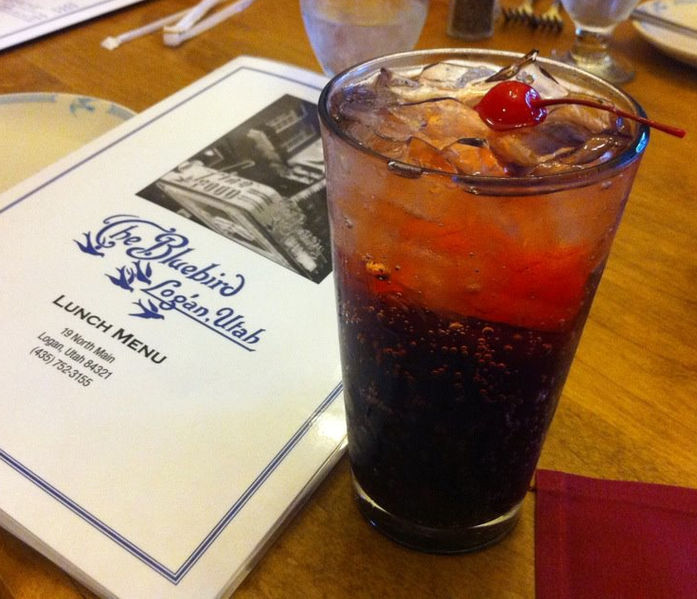
Photo Courtesy Freakboy/Wikipedia
Logan, Utah is a charming town to visit, with plenty of history to take in and old structures to visit. For more information on Logan, check out the official visitor’s guide, or schedule a chat with a travel planner.
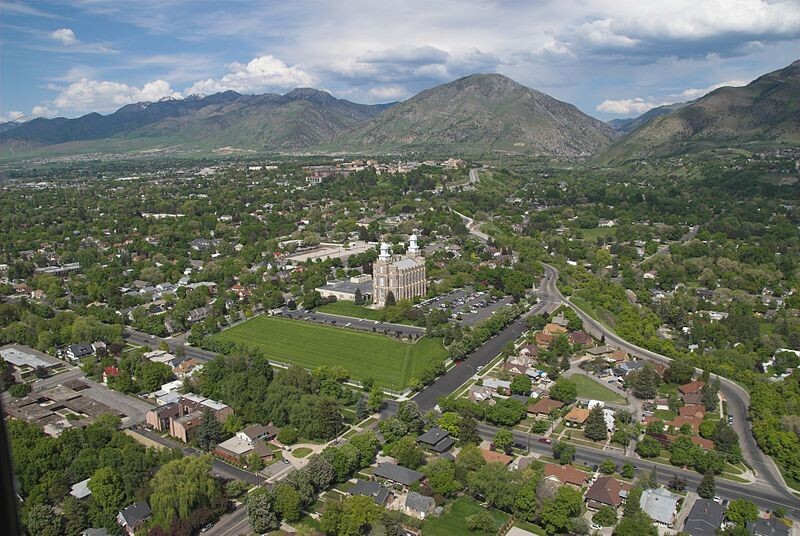
Photo Credit: Michael Gordon Photo Courtesy Wikimedia Commons




